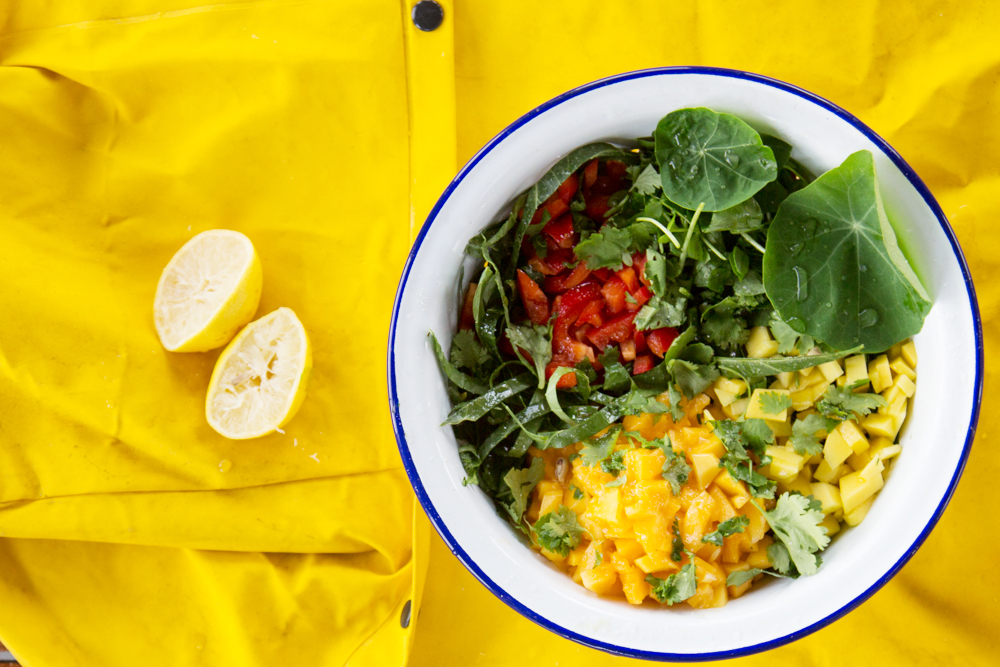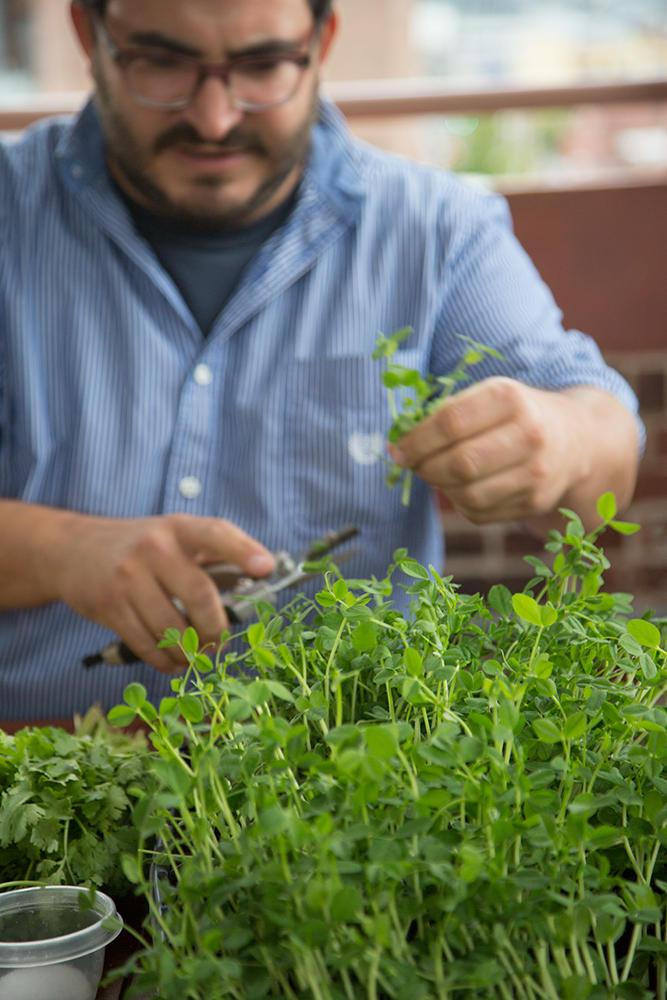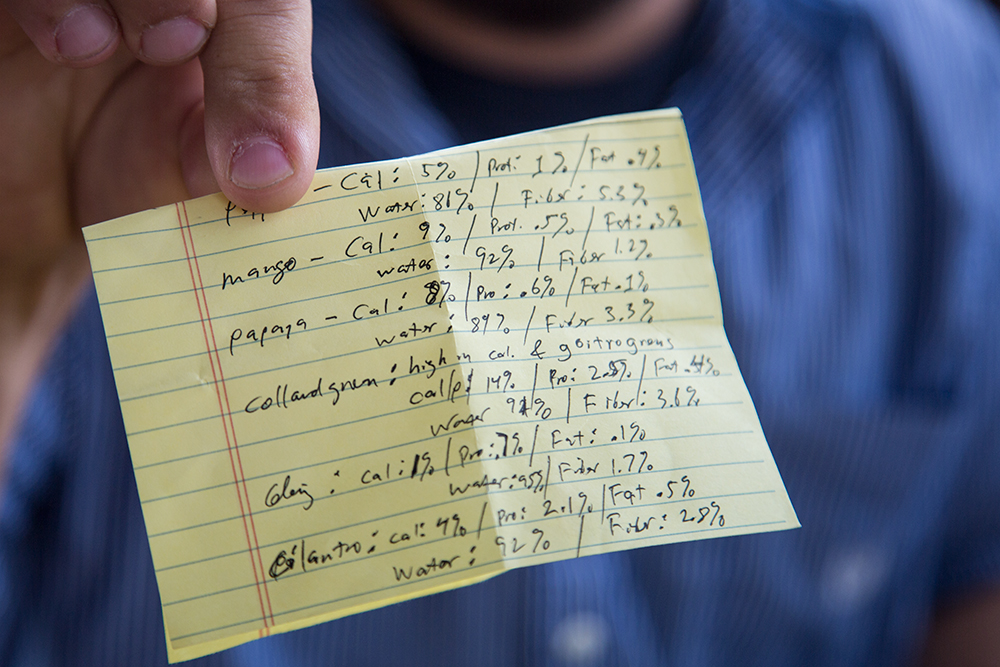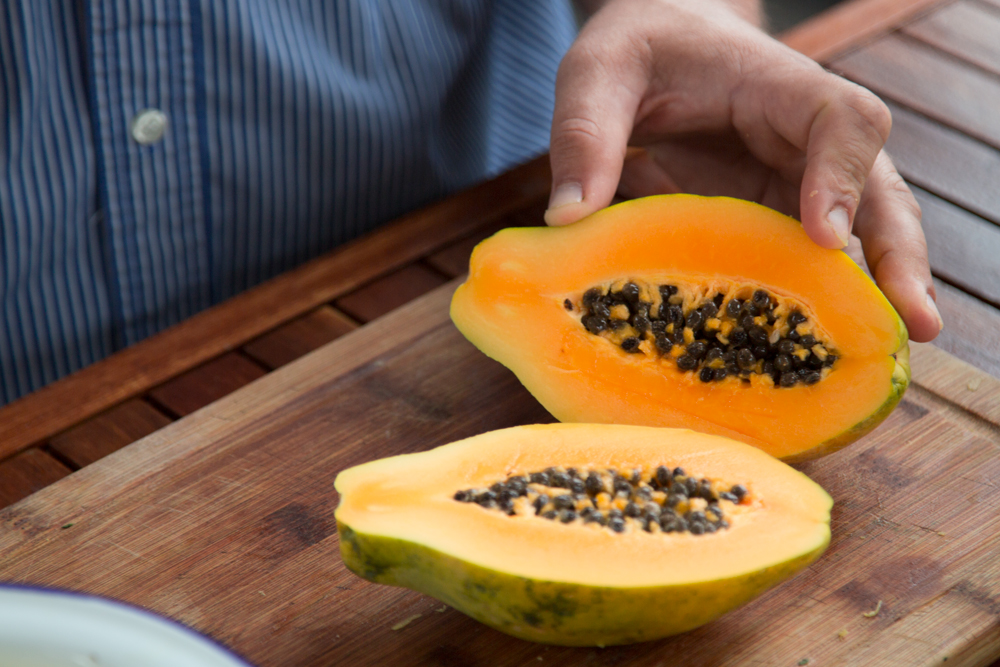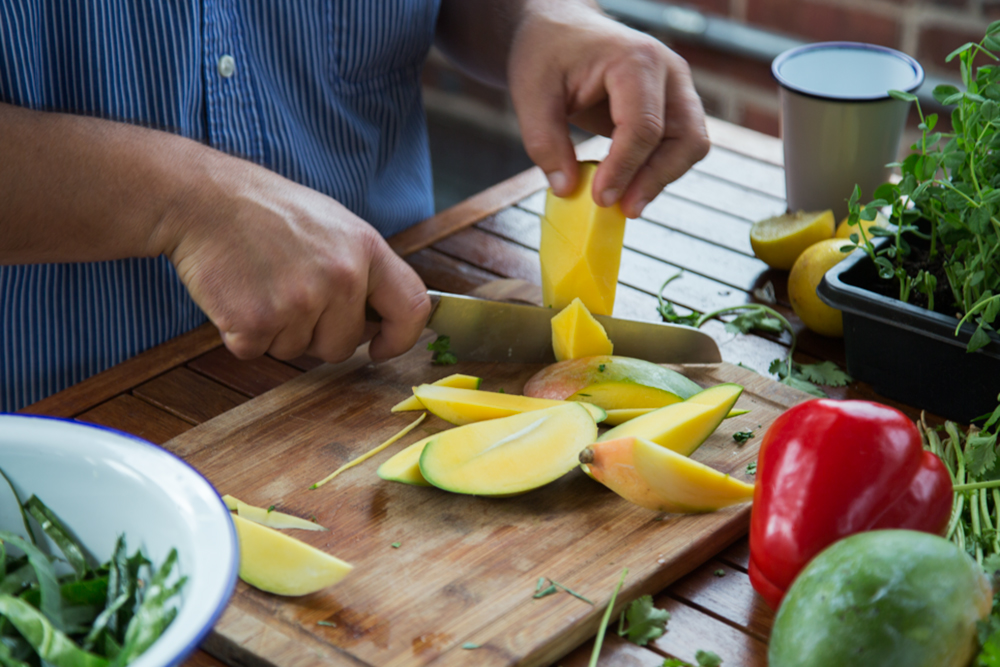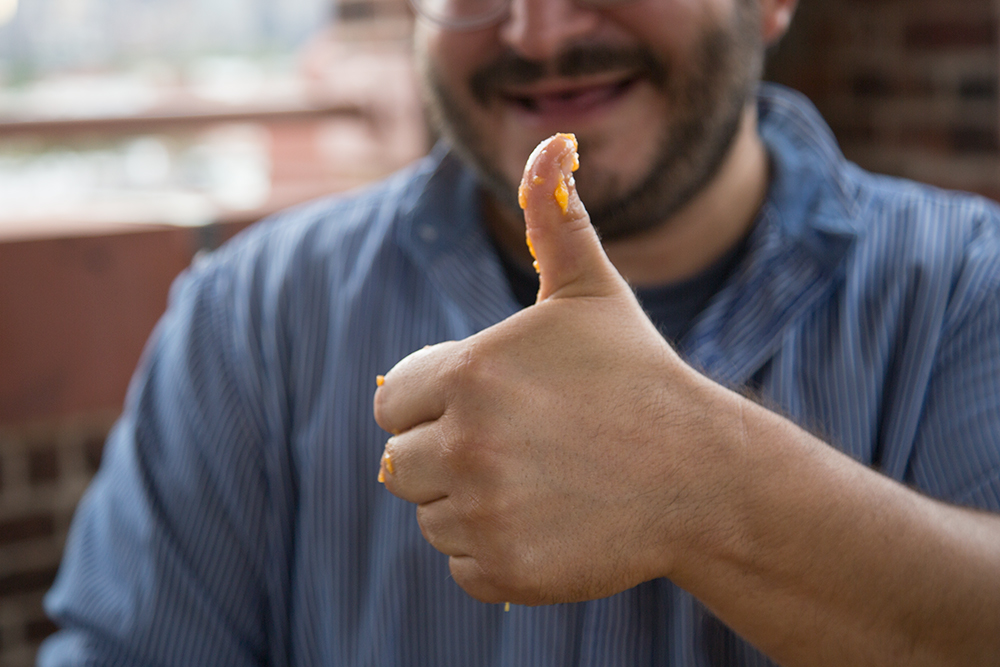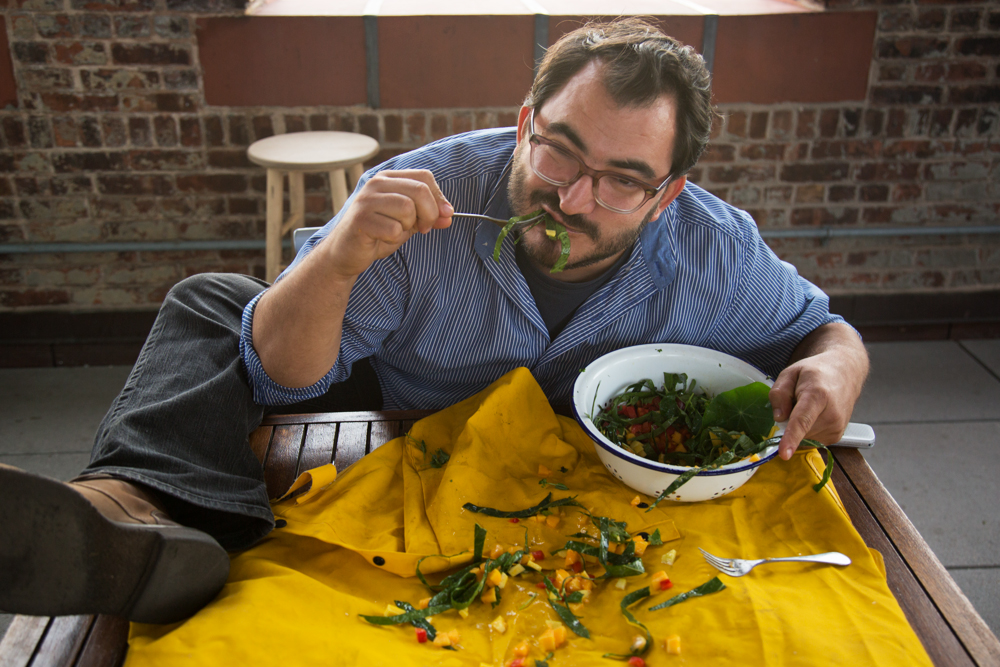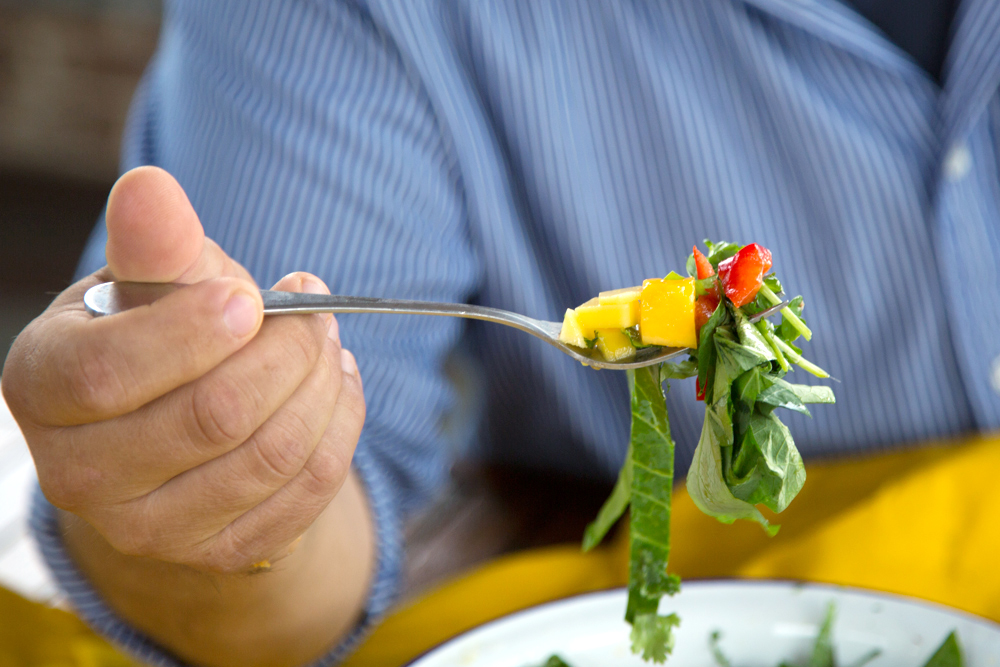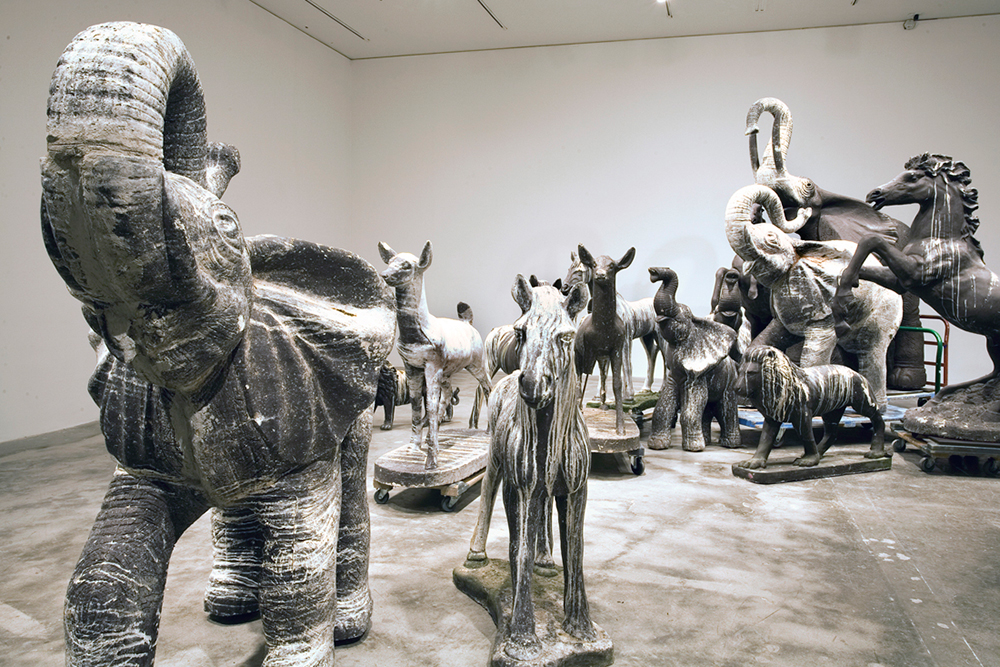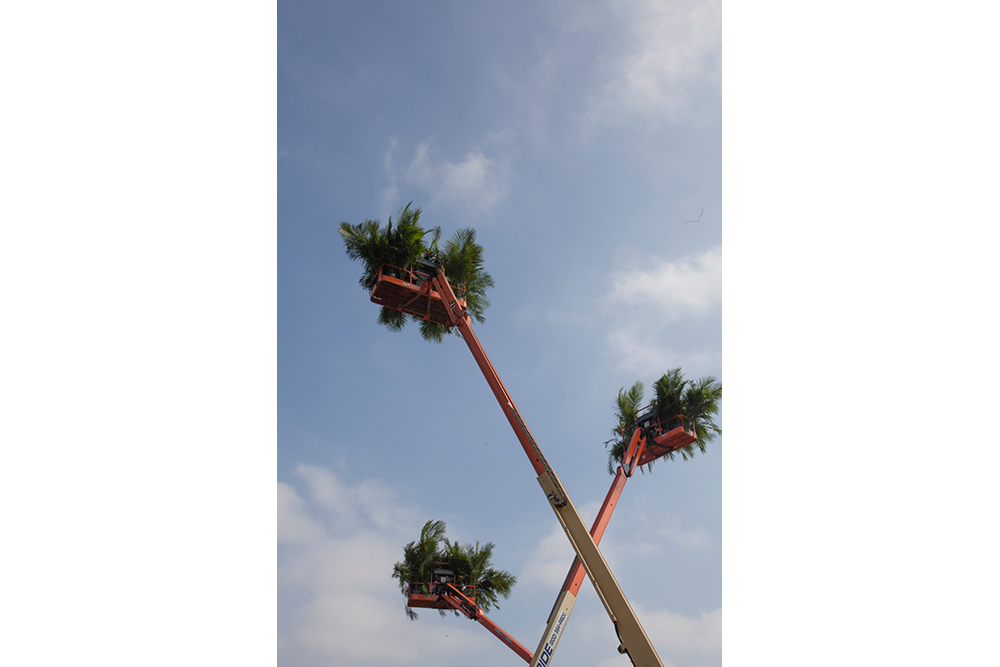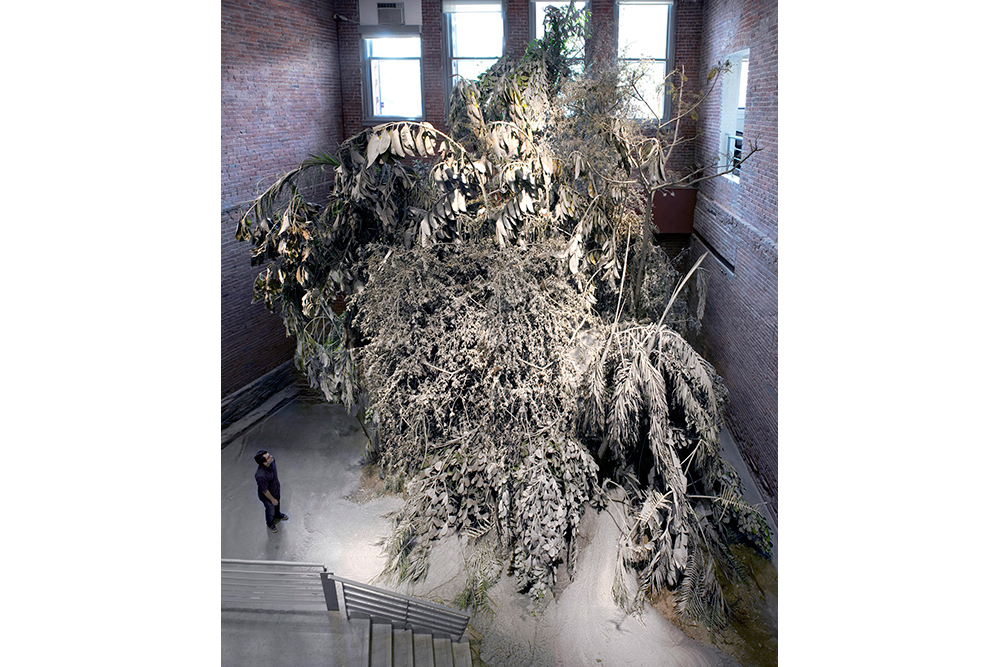POSTED UNDER
- Healthy Salad,
- MOMA PS1,
- SUMMER
INGREDIENTS
- bell pepper,
- CILANTRO,
- collard greens,
- lemon,
- mango,
- nasturtium,
- papaya,
- pea shoots
NOTES
I will be the first to admit (unless David admits this first), I did not have much confidence in the strength of this salad, aside from its conceptual rigor. In the end, it was surprisingly delicious. The fruit was a nice balance to the hearty collards. Somehow, it worked.
RECIPE
DIFFICULTY
EASY
SERVES
4
PREP TIME
10 MINS
Salad
-
1smallpapaya
-
1/2cuppea shoot (optional)
-
1smallslightly under-ripe mango
-
6-10mediumcollard leaves
-
1smallred bell pepper, de-seeded
-
5-6sprigscilantro
Dressing
-
1lemon, juiced
-
1/3cupextra virgin olive oil
-
salt and pepper to taste
POSTED UNDER
- Healthy Salad,
- MOMA PS1,
- SUMMER
INGREDIENTS
- bell pepper,
- CILANTRO,
- collard greens,
- lemon,
- mango,
- nasturtium,
- papaya,
- pea shoots
David Brooks is a strange bird. If he wasn’t an artist, he might be an ecologist, an explorer, a marine biologist, or maybe an ornithologist? But, as an artist, David is able to occupy all of these roles, while having the freedom and license to pervert them. He is an explorer, who manages to bring his experience in the great outdoors back inside the gallery, for our viewing pleasure. He has left his sculptures out in nature to collect bird droppings and bat guano, then lacquered them for an exhibition at Saatchi Gallery. He created a site-specific installation at MoMA PS1, for which he sprayed twenty tons of concrete over a cluster of twenty-foot-tall, Amazonian trees. Over the course of the exhibition, the trees decayed and collapsed, always in a state of transition. For Brooks, art institutions are not a world unto themselves, instead, they are an invitation to think creatively about global issues affecting our environment and our ecosystem. Like many of my favorite artists, the “art” part is almost an excuse to do the things you love and to explore new places.
So, David used his salad invite as an opportunity to research the diet of one of his favorite reptiles – the iguana. Turns out, the iguana has a very particular palate. They receive almost all their water from the foods they eat (hence the high water content fruits like papaya and mango), and have particular vitamin and mineral requirements (if you are curious about the breakdown, see the photo above with David’s notes on each ingredient). I was a bit uneasy when upon arrival, David admitted that he had no idea how to cook, but in the end, the salad was quite appealing. Until he splashed it all over a musty old raincoat and put his feet up on the table, in an effort to present his best impression of an iguana…
David Brooks In His Own Words
Julia Sherman: Do you cook often?
David Brooks: Full disclosure: I’m actually not a good cook. Typically, if I’m going to cook, I call my friends (laughs). My ex-wife was an amazing cook and my ex-girlfriend, who I am still very close with, was a phenomenal cook. She learned from her grandmother in the hills of Guatemala. They’d grow everything themselves and they’d butcher their own chickens. She doesn’t even read recipes; she just has all this deep knowledge from her grandmother. How do you even begin to compete with that? I’m from Brazil…Brazil, Indiana that is. Corn is just about all I know!
JS: What was the inspiration behind this salad?
DB: This salad is an experiment to see if we can turn an iguana’s diet into something that’s also palatable for us. Iguanas require the right balance of calcium and phosphorus and water in their vegetables, hence my weird list of ingredients. I think a lot about iguanas; they look so prehistoric. They are an evolutionary conundrum in a way. Did you know almost a million pet iguanas are sold every year in the United States? They’re incredibly domestic and exotic at the same time.
JS: Have you ever owned a reptile as a pet?
DB: No, but I see them in South Florida a lot. They’re not actually indigenous to Florida, but people buy them as pets and then let them go, and they have managed to create a sustainable feral population there. In fact, this one time an iguana was out in the ocean and climbed up the side of the sailboat I was on and tried to get on board, which was very funny.
JS: Why South Florida?
DB: Two of my closest friends live down there. And it’s a place I’ve gone to since I was very young. I’ve made friends, found a community, and managed to do a few projects there.
I have watched that landscape change over time. Environmentalists and ecologists say if they can solve the infrastructural problems of Miami, and the water supply and protection of endangered species issue in South Florida, they can do it anywhere in the planet. The stakes in that area are so high.
JS: Why are you based in New York? It seems like a lot of your interests are everywhere else.
DB: If I’m an artist first and foremost, these are things that influence my practice. But also much of the United States’ history of consciousness and ideologies around our relationship with the natural world came out of New York.
JS: What do you do when you’re not making art?
DB: I fish and go bird watching.
JS: Tell me about bird watching. Do you take photos or do you just look?
DB: I don’t often take photos, I watch and keep a running list of what I see on any given walk. I was bird watching at the Headlands Center for The Arts on my recent residency. I was quite active! I left my list behind for their archives, I was proud of how many species I had spotted (laughs).
JS: That’s amazing! I like to mushroom hunt, and I feel like it’s similar in practice because you’re looking for things that have been there all along, but that you just never noticed before.
DB: There are a few things about birding. It has a code of ethics and it’s very, very rare for people to break the code. When you identify a bird, you really have to be honest that you identified it without a doubt. A lot of galls look alike, so who’s to say it’s a Laughing Gull versus a Herring Gull? When they are migrating, it’s really hard to tell the difference, so you have to be sure if you are going to claim to have spotted a specific species. It’s particularly important when it comes to birds of prey to identify them correctly.
JS: Is that why people take photos? For reference or for identification purposes?
DB: If you can get a photo, it’s huge. You need a photo if it’s something really rare. What’s great about birding is that you can do it anywhere. Of course, you can make a special concerted effort to go to a specific place where you’ll know you’ll see a number of birds at one time, but if you are a birder, you’re always birding.
